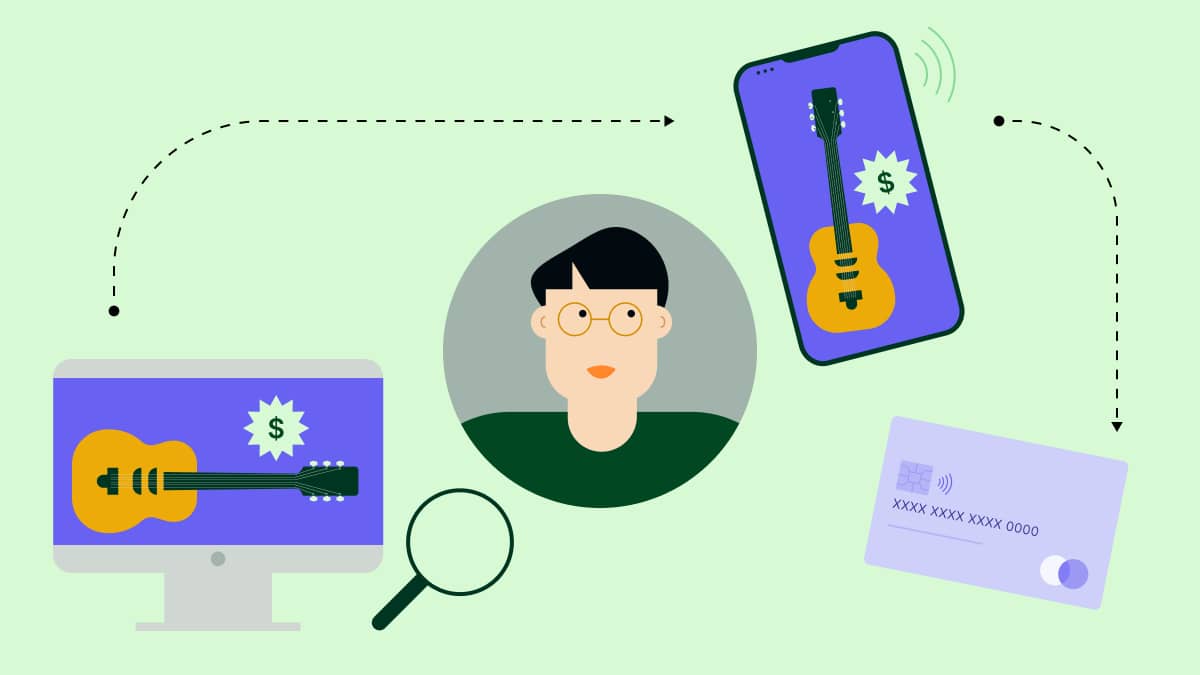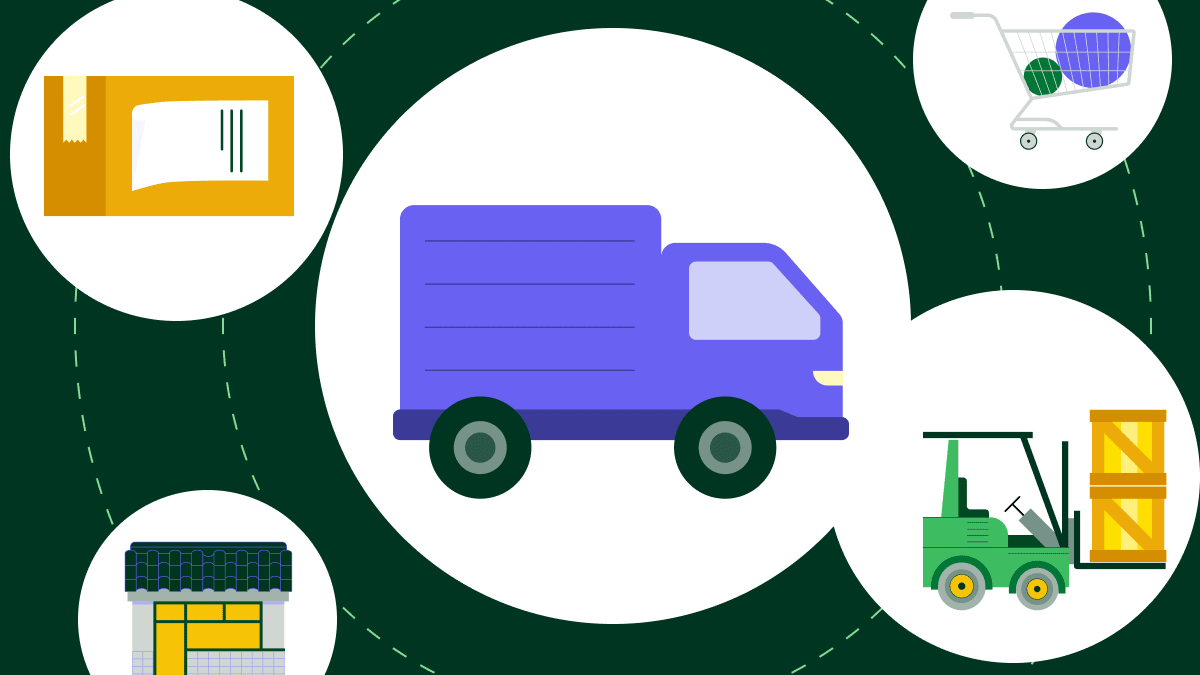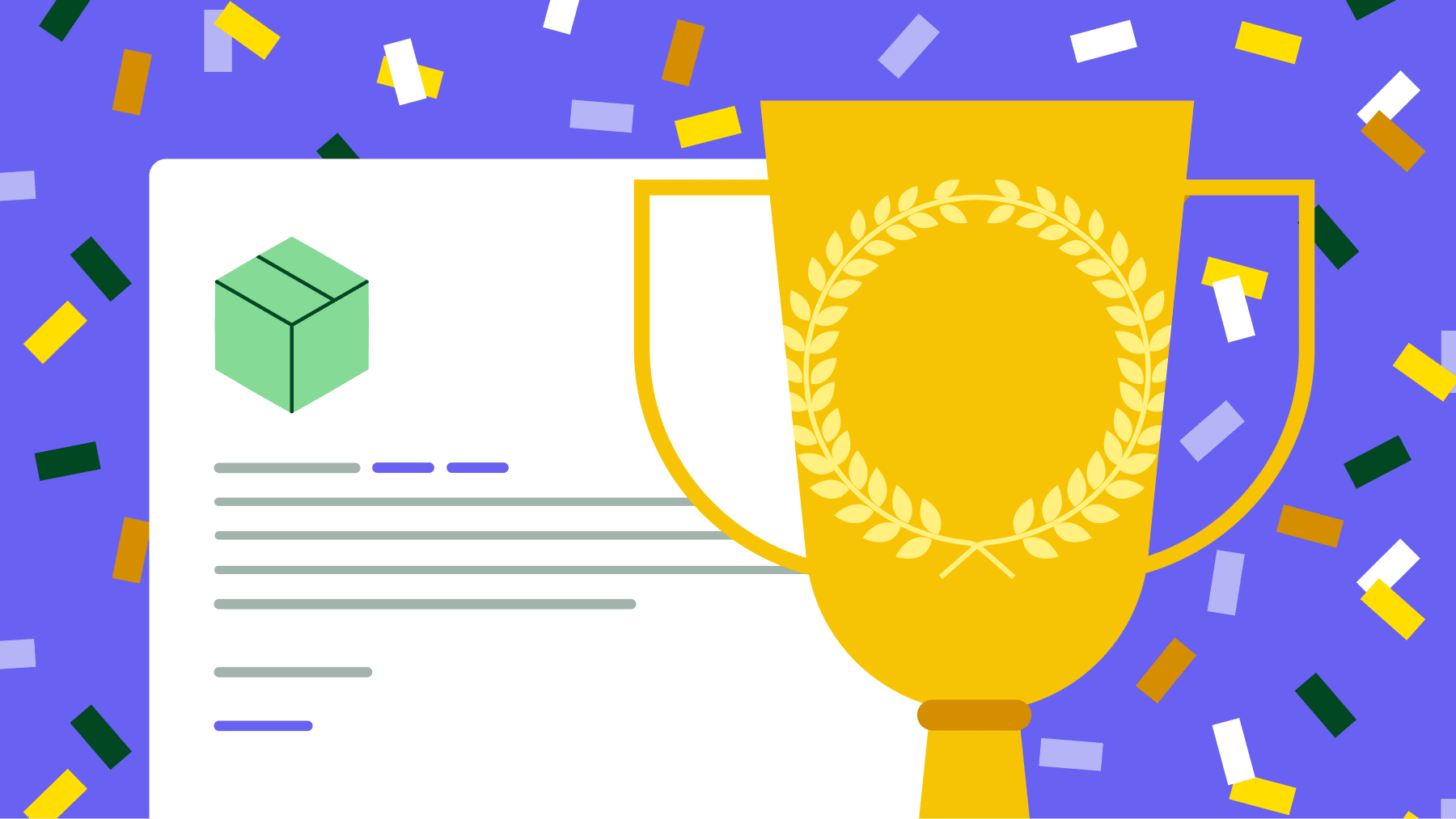Most potential customers need more than one touchpoint before taking action. They might browse a product page or sign up for a newsletter, then leave without converting. Remarketing helps bring them back at the right time with the right message.
In this article, we’ll break down the benefits of remarketing, explain the difference between remarketing and retargeting and share popular remarketing tactics. You’ll also learn how to optimize your remarketing strategy and boost conversion rates across channels.
What is remarketing?
Remarketing is a digital marketing tactic for re-engaging people who have previously interacted with your business. These users may have subscribed to your newsletter, downloaded a resource or signed up for a free trial but failed to take the next step.
Email is the most common form of remarketing, and it works across both B2B and B2C contexts.
A B2B company might send a follow-up email to a lead who attended a webinar but didn’t schedule a demo, offering a case study relevant to their industry.
Here’s an example from Pipedrive:
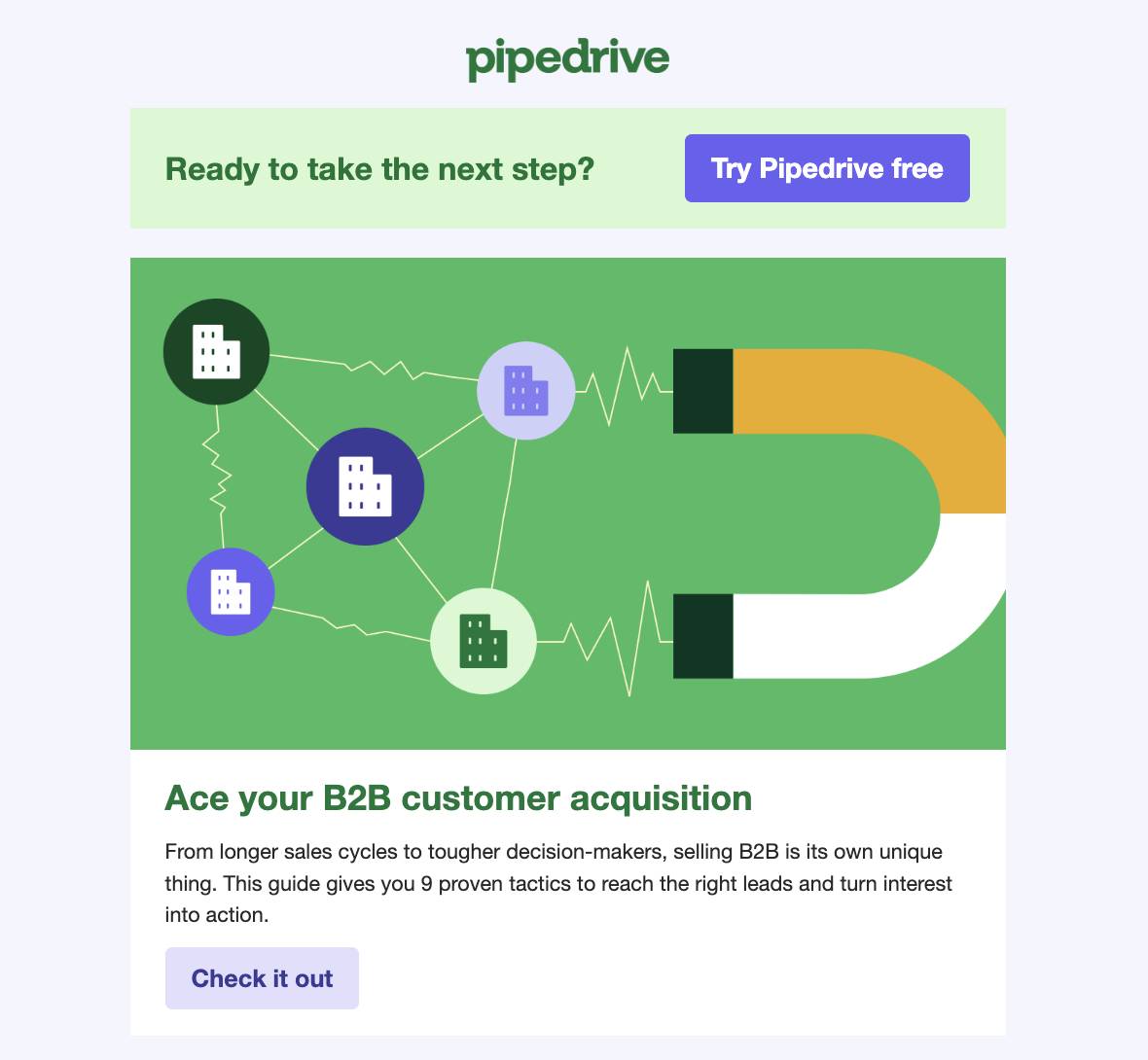
The short email featuring educational resources tailored for SMBs is designed to keep Pipedrive top of mind by delivering ongoing value and building trust over time.
A B2C e-commerce business might similarly follow up with a mobile app user who browsed a product but didn’t complete the purchase, highlighting similar items or a limited-time offer.
Remarketing emails can include reminders, offers or helpful content that encourages the user to return and complete a desired action.
Retargeting vs. remarketing: what’s the difference?
Retargeting typically uses paid tactics like pay-per-click (PPC) and search ads to reconnect with website visitors who have interacted with your content but didn’t take action.
Remarketing, on the other hand, focuses on re-engaging existing customers, such as email subscribers or qualified leads, through direct channels.
Retargeting | Remarketing |
Uses tactics like PPC and display ads to reconnect with users who have recently visited your website. | Uses email to re-engage contacts who have already shared information with you, such as email subscribers or leads in your database. |
Both tactics are useful, and many businesses use remarketing and retargeting campaigns together. Combining personalized ads with email messaging helps reinforce your brand across multiple touchpoints and improves the chances of a user returning to complete a desired action.
Why remarketing matters
Remarketing is a cost-effective way to re-engage people who already know your brand.
Remarketing uses first-party data and owned channels, such as email, to help you stay top of mind without relying on large ad budgets.
For example, start-up company Tirendo used Google’s remarketing lists for search ads and saw a 161% increase in conversion rate while cutting costs per order by 43%.
It’s not just large brands seeing impact, either.
According to Growth Badger, their small and medium-sized business clients achieve a 32% lower cost per acquisition from Google Ads remarketing compared to regular search ads.
Remarketing also supports multi-channel strategies by combining sales outreach with personalized content or reminders that align with where users are in their journey.
It’s a scalable way to improve engagement, reduce acquisition costs and better use the traffic and leads you already have.
Here are some other reasons why remarketing plays an essential role in a modern digital marketing strategy:
Improved brand recall – stay visible through consistent, helpful messaging
Smarter audience segmentation – create campaigns based on user behavior and deal stage
Increased lead quality – reconnect with contacts more likely to take action
Long-term relationship building – nurture leads with timely, relevant content
Multi-channel flexibility – combine email, content marketing and CRM sales data to deliver a cohesive experience
Remarketing is a valuable tool for driving conversions and building trust. When used strategically, it helps you get more out of your existing audience and keeps your brand connected throughout the customer journey.
5 types of remarketing
Not all remarketing strategies are the same. The right approach depends on your audience, goals and where users drop off in the customer journey.
Here are some popular remarketing channels and campaigns.
1. Email remarketing
As mentioned, email is one of the most effective and cost-efficient remarketing channels. According to Litmus, 35% of companies see $10–$36 for every $1 spent on email remarketing efforts.
With the right segmentation and timing, email lets you deliver messages that speak directly to a contact’s recent behavior or interest.
Below is an example remarketing email sent by marketing agency Zeus Jones:
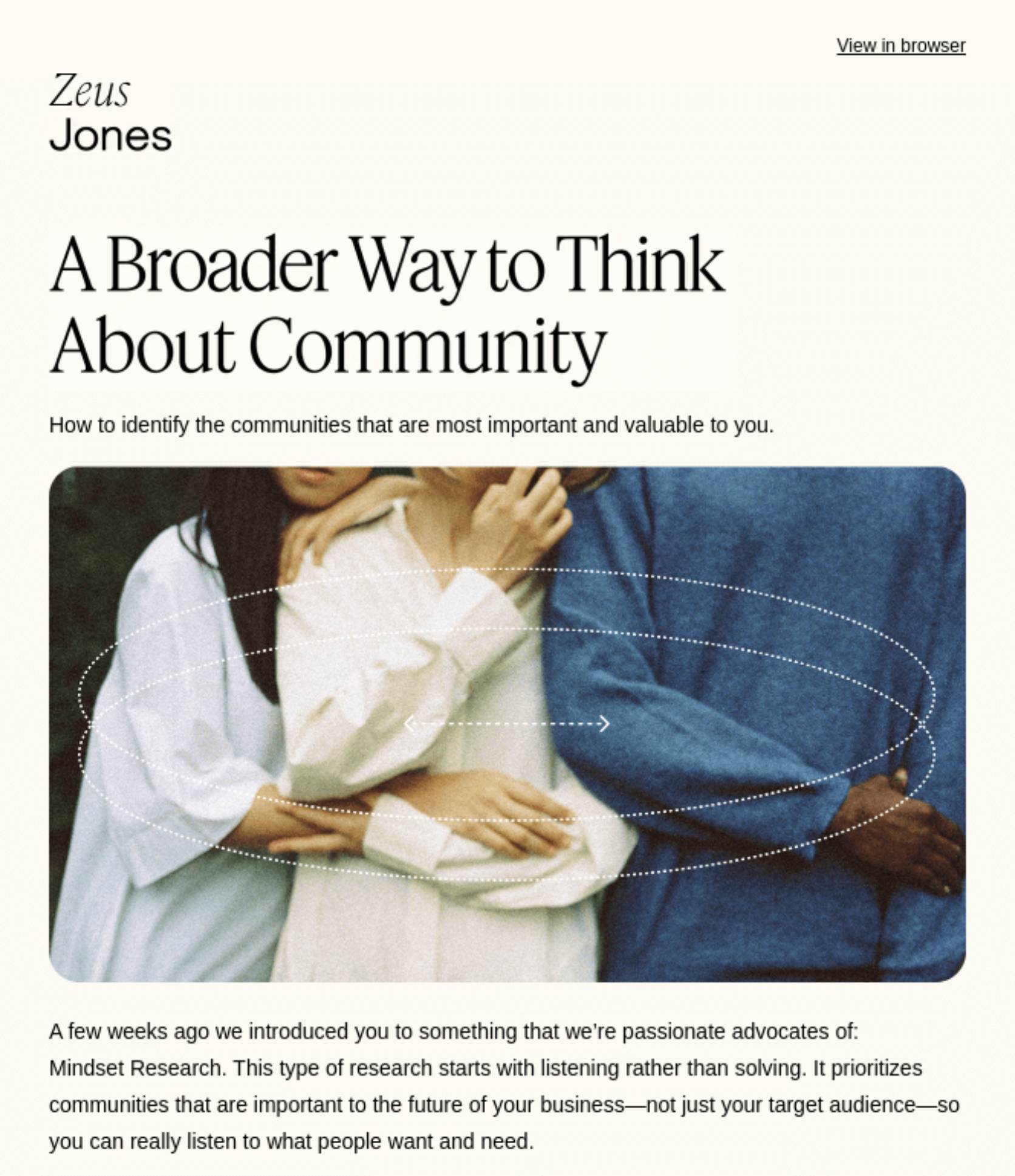
This email follows up with those who didn’t take action after a webinar. The goal is to engage them with helpful, relevant resources tied to the session.
Contact lists built on first-party data offer more control, better deliverability and fewer compliance risks than paid channels. They also fit naturally into a longer sales cycle, making them ideal for B2B remarketing strategies.
2. SMS remarketing
Mobile SMS marketing offers a direct way to reach leads who’ve gone quiet or stalled mid-funnel. SMS is a strong complement to email, especially for time-sensitive messages or simple reminders.
In a B2B context, SMS can be used to confirm meeting times, follow up after a webinar or re-engage leads who haven’t responded to email.
For example, if a prospect downloaded a white paper but hasn’t replied to your follow-up, a brief text inviting them to schedule a quick call can prompt action.
Typically, SMS remarketing is used in e-commerce to promote offers, like this example from skincare brand Elemis:
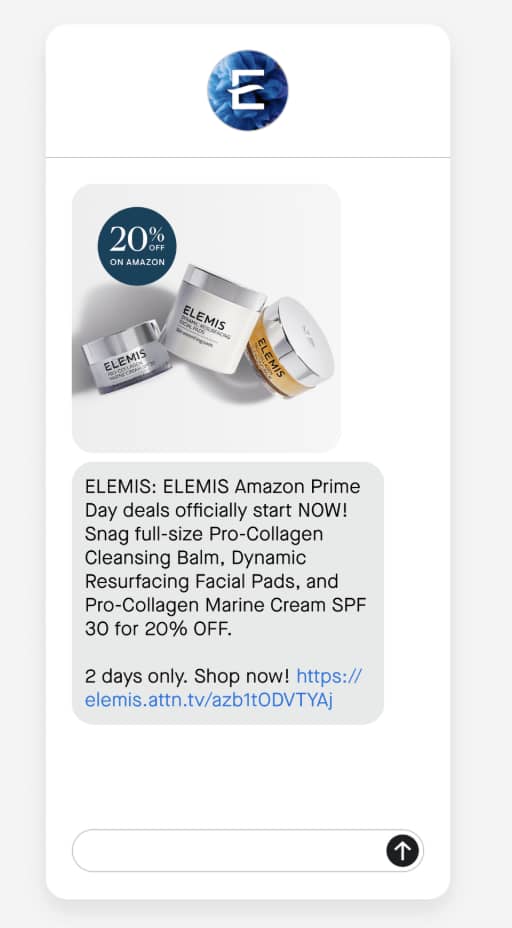
SMS works best when it’s concise, relevant and clearly opted into. Used sparingly, it adds a personal touch that keeps your brand visible without overwhelming the recipient.
3. Newsletter campaigns
Newsletters are a long-term remarketing tool that keeps your brand top of mind with leads not yet ready to convert. Instead of pushing a hard sell, newsletters provide consistent value through educational content.
There’s a reason why 71% of B2B marketers use email newsletters as a distribution channel. For B2B teams, a well-executed newsletter can educate prospects over time and reinforce credibility.
Even if a contact isn’t actively engaging today, regular newsletter touchpoints help build familiarity and trust. So when they’re ready, your brand is the one they remember.
For example, B2B marketing community Exit Five has built a successful business through its newsletter, which it sends out three times a week.
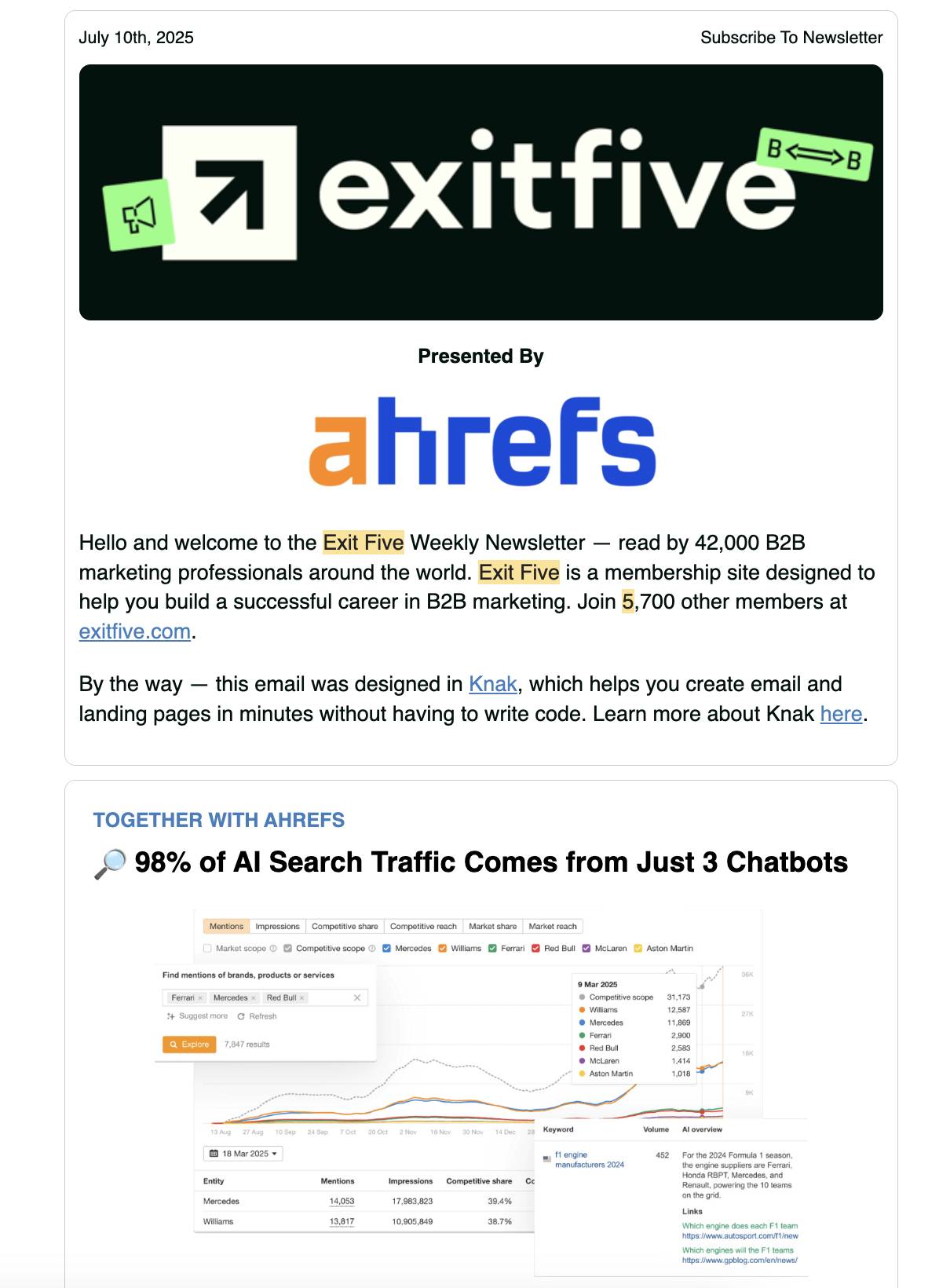
You can also use drip marketing sequences to deliver valuable content over time and keep leads engaged between touchpoints.
4. Win-back campaigns
Win-back campaigns focus on reconnecting with leads who were once engaged but have gone inactive. These might be prospects who attended a demo, exchanged emails or downloaded resources but haven’t taken the next step.
In B2B, where sales cycles are longer and often complex, timing and context matter. A well-crafted re-engagement email can reignite interest by offering new value, such as a relevant case study, recent product update or a time-sensitive invite to a webinar or consultation.
These campaigns can be delivered through email, SMS or even via LinkedIn. The key is to acknowledge the past engagement, offer something useful and make the next step easy.
For example, here’s a template for a short, snappy win-back email:
Subject: Still on your radar?
Hi [First name],
I’ve been thinking about our last conversation. We spoke a while back, and I promised to follow up.
A few clients in your space have been tackling [insert relevant pain point], and I thought it might be worth reconnecting.
Open to a quick catch-up?
Best,
[Your Name]
This template works because it’s short, direct and quickly gets to the point. Leaving an open-ended question also encourages the contact to reply.
Note: For more inspiration, look at these re-engagement email strategies that have worked across industries.
5. Social media remarketing
Organic interactions and targeted content on social media platforms like LinkedIn can be successful B2B re-engaging tactics.
You can stay visible by sharing relevant ads, promoting webinars, highlighting customer results or publishing thought leadership content. Social selling is also an effective sales tactic and can work for both cold and warm leads.
Here’s an example from B2B data provider Cognism. The LinkedIn post promotes a free demand generation playbook to users who have previously visited the site.
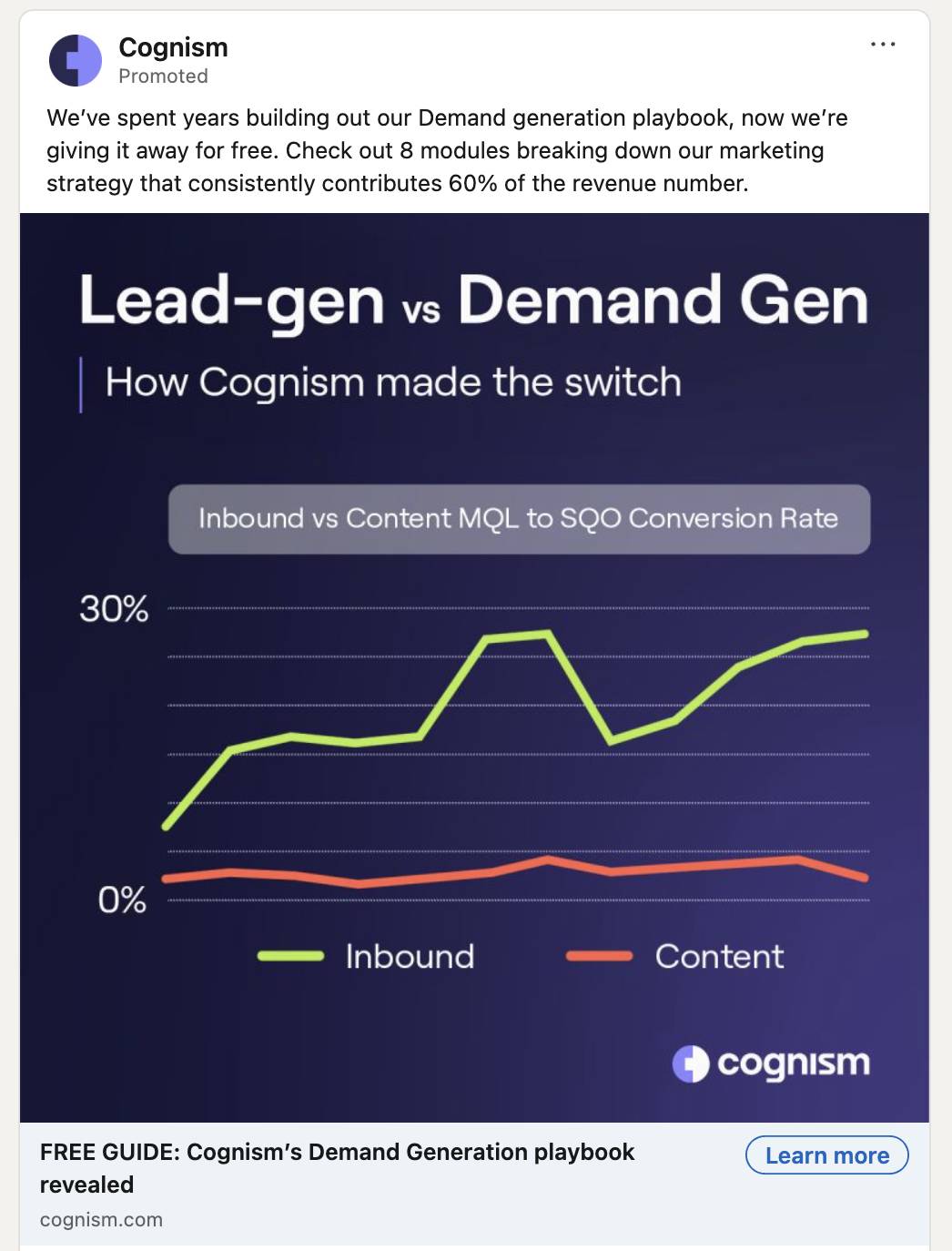
Each channel plays a role in keeping your brand relevant, and while you don’t need to use every strategy, choosing the right mix based on your goals and audience can boost engagement.
Download Pipedrive’s general event checklist template
How remarketing works (with two practical examples)
The most effective strategies combine both remarketing and retargeting tactics. Together, they create an approach that spans the whole marketing funnel.
Here’s how the process typically works:
Identify engaged leads. Tracking pixels, cookies or CRM integrations help you capture visitor activity. These tracking technologies get leads on your radar.
Segment your audience. Use your CRM or marketing automation tool to group leads based on behavior, funnel stage or attributes like company size, job title or industry. Segmenting ensures your campaigns are targeted and relevant.
Create messaging and campaigns. Tailor your messaging based on each segment’s intent. Focus on their goals, pain points and the next logical step, such as reading a case study, booking a call or exploring a feature.
Launch campaigns on the right platforms. Deliver your retargeting campaigns using paid channels like Google Ads, LinkedIn or display networks. Pair these approaches with owned channels like email or SMS for a more consistent and personalized experience.
Let’s look at this process in action at different stages of the customer journey.
Example 1: Following up after a product demo
Imagine a potential customer booked a product demo but went quiet afterward. You had a conversation and shared your pitch, and they seemed interested. Then nothing.
Instead of waiting, you launch a remarketing campaign.
You create a custom audience from your CRM database of people who booked a demo but didn’t convert. Then you run retargeting ads across LinkedIn and display placements highlighting your unique value or a limited-time offer.
The messaging focuses on results, like how customers improved productivity or grew revenue.
You also send a short, targeted email with a link to a relevant case study using the template below:
Subject: See how [Customer Name] solved [pain point] with [Your Product Name]
Hi [First name],
Thanks again for taking the time to explore [Your Product Name] with us.
I wanted to share a quick story that might resonate – how [Customer Name], a [company size] team in [industry], used [Your Product] to [key result, e.g., reduce manual admin by 40% in 3 months].
👉 [Link to case study]
If you’re still exploring options, I’d be happy to discuss how we could help with [their pain point or goal]. Let me know if you’d like to reconnect.
All the best,
[Your Name]
This combined approach keeps your brand top of mind and gives users multiple opportunities to re-engage on their own terms.
Example 2: Nurturing a newsletter sign-up
Say a visitor lands on your blog, reads a few articles and signs up for your newsletter. They haven’t explored your product pages or reached out for more info yet, but they’ve shown early interest.
You decide to use remarketing to move them further down the funnel.
You start by adding them to a remarketing list built from your email platform or website pixel. Then you run social media ads that showcase beginner-friendly use cases, customer stories or helpful videos that explain how your product solves common problems.
Below is a real-world remarketing example from AI writing platform AirOps on LinkedIn:
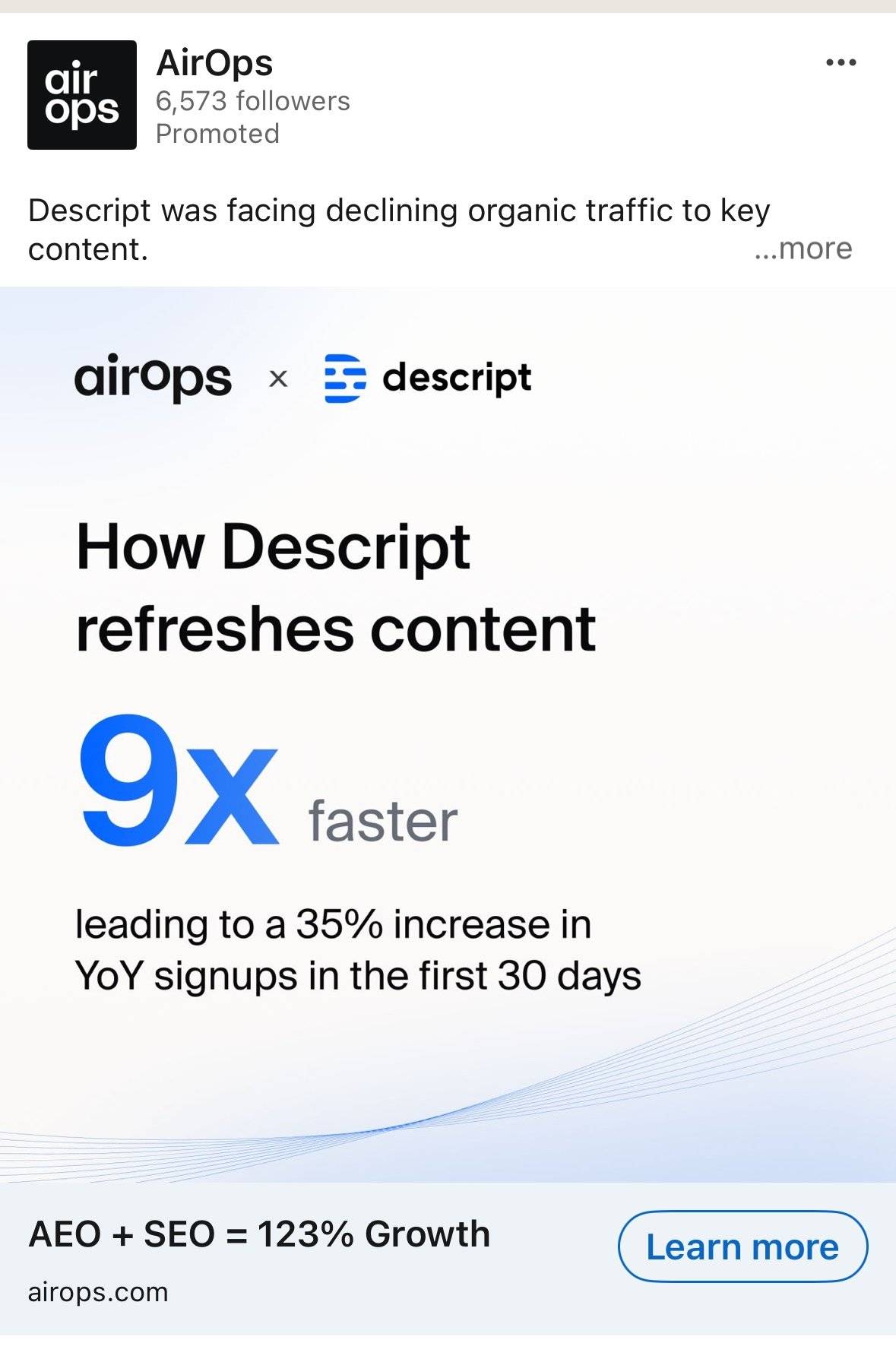
These targeted ads are designed to build brand awareness and trust.
At the same time, your email campaigns deliver relevant content over time (e.g., blog posts, short guides or webinar invites) to deepen customer engagement.
For example, AirOps sends high-value, educational emails that its target audience would find useful.
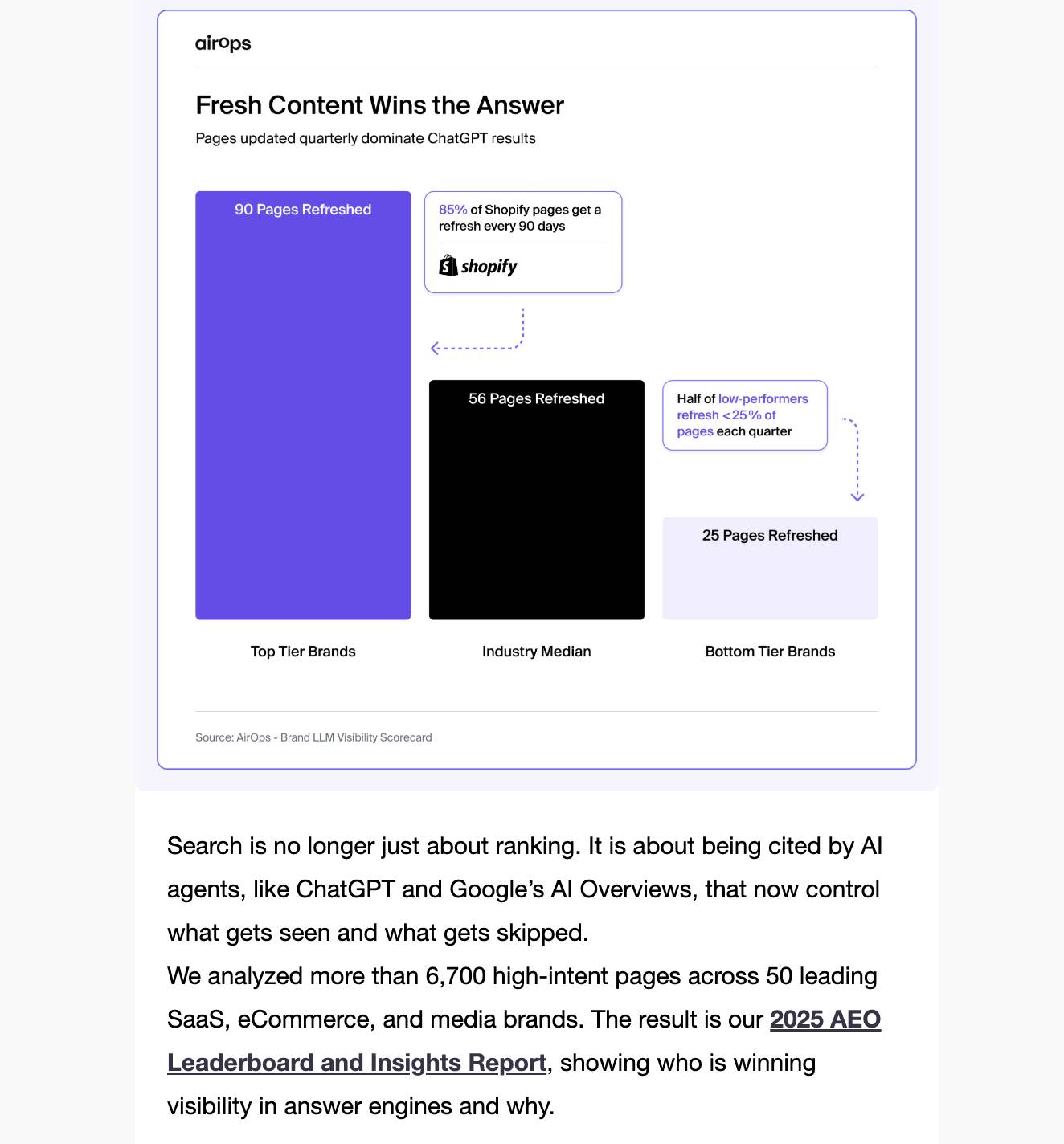
By combining paid and owned channels, you create a remarketing strategy that educates, nurtures and encourages the user to take a desired action, such as booking a demo or exploring your landing pages.
Turn Maybe Into Yes With These Killer Follow Up Email Templates
Tips for staying compliant when remarketing
As digital privacy regulations evolve, businesses need to be more thoughtful about how they collect and use customer data. Remarketing relies on tracking user behavior, so it’s essential to stay transparent and follow legal requirements and data protection rules.
Here are some top tips for staying compliant when running remarketing campaigns:
Get clear cookie consent. Make sure your website has a visible cookie banner that explains how tracking works. Users should be able to accept or decline cookies before any remarketing pixels are activated.
Follow GDPR and CCPA rules. If you’re targeting users in the EU or California, you need to comply with regulations like the General Data Protection Regulation (GDPR) and the California Consumer Privacy Act (CCPA). Compliance includes honoring opt-outs, offering access to stored data and updating privacy policies regularly.
Use first-party data responsibly. When using CRM or email data for remarketing, confirm that users gave permission to be contacted. Avoid using purchased or scraped lists and make opt-out options easy to find in every message.
Set audience duration limits. Don’t keep users in your remarketing lists forever. Set reasonable time frames, like 30 or 60 days, to avoid overexposure and ensure your ads stay relevant.
Respect platform guidelines. Advertising management platforms like Google Ads, Google Display Network or social media networks have their own advertising rules. Review their policies on sensitive content, targeting limitations and data use to avoid account issues.
Avoid over-targeting. Too many ads can feel invasive. Limit ad frequency and avoid aggressive messaging, especially for users who haven’t shown recent interest.
Keep messaging transparent. Let users know why they’re seeing your ads. Use ad copy that adds value, rather than making people feel tracked or pressured.
Staying compliant helps you avoid legal risks, but it also builds trust. Users who feel you respect their privacy are more likely to re-engage with your brand.
Power up your remarketing with Pipedrive’s tools
Remarketing is only as strong as the data and systems behind it. With Pipedrive, you can capture lead activity, track touchpoints and automate follow-ups in one place.
Give your sales and marketing teams the visibility they need to build smarter remarketing campaigns and increase conversions.
Here are four ways Pipedrive can support and strengthen your remarketing efforts.
1. Track your website visitors
Many high-intent visitors never fill out a form, but that doesn’t mean you have to lose them. Pipedrive’s Web Visitors add-on identifies companies visiting your site and shows what pages they viewed.
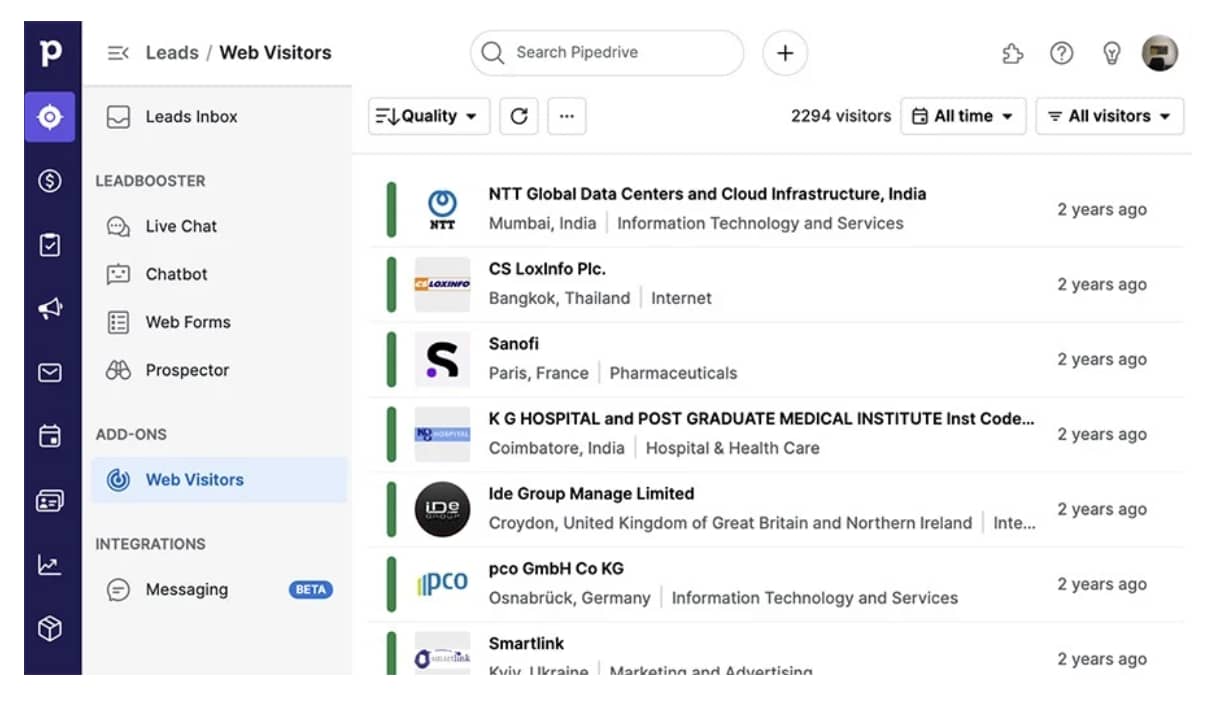
Even if visitors stay anonymous, you can see firmographic data like company size, industry and location.
This insight helps you build remarketing audiences based on real interest. If a company visits your product or pricing pages multiple times, you can create a retargeting campaign focused on decision-makers at that business.
You can also filter by quality or last visit time.
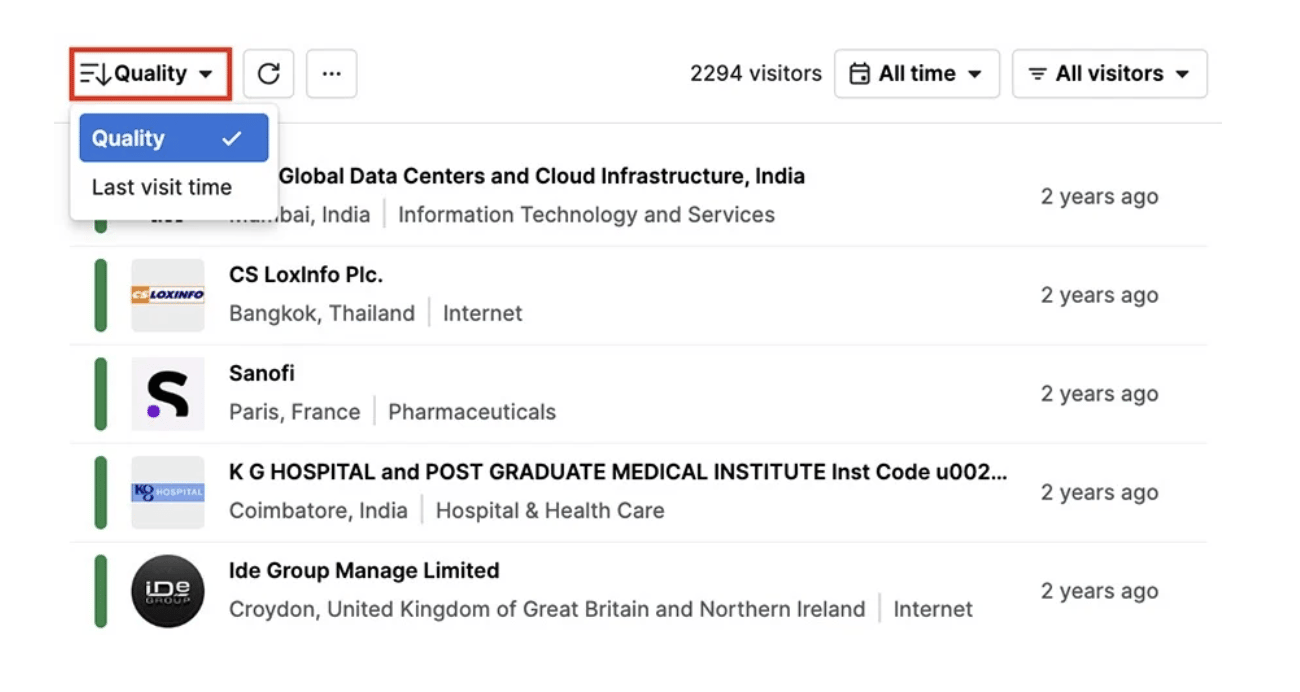
Tracking visitors is a powerful way to stay proactive, even when leads don’t signal direct interest.
2. Organize contacts with custom fields
To run effective remarketing campaigns, you must group leads based on behavior, interests or deal stage.
Pipedrive makes this easy with custom fields and filters.
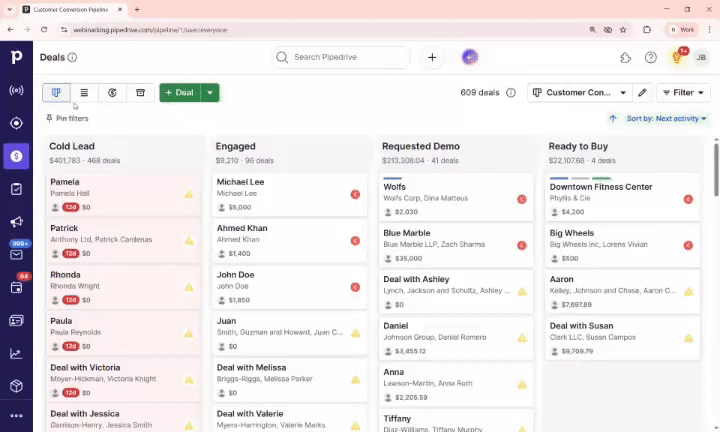
Custom fields give your team the flexibility to store and organize data in a way that reflects your specific sales process and marketing goals. You can tailor fields to match your personas, track campaign engagement or flag high-intent behaviors.
This level of customization helps your team stay organized. From there, you can launch personalized remarketing ads or schedule an automated email to re-engage them.
3. Segment and nurture leads with email marketing campaigns
Effective email remarketing starts with strong segmentation. Pipedrive’s email segmentation tool lets you group contacts by deal stage, behavior, engagement level or custom criteria.
Pipedrive’s email marketing software has a drag-and-drop editor, where you can create and save as many templates as you like.
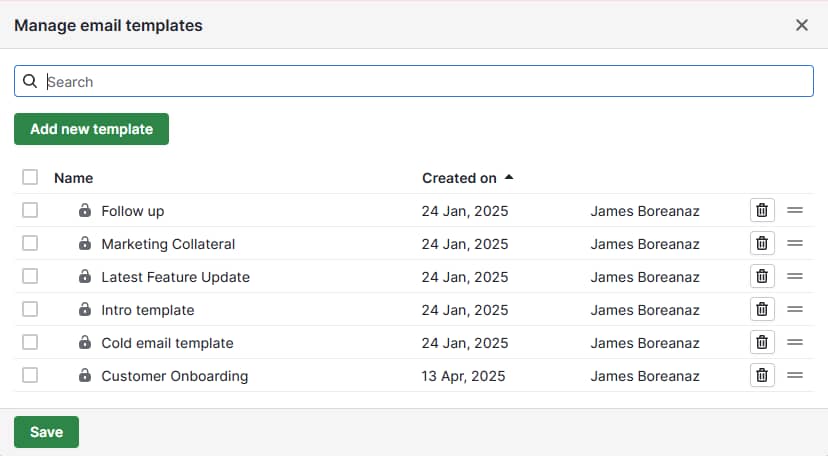
For example, you might follow up with leads who viewed your pricing page but didn’t schedule a call, or re-engage contacts who haven’t replied in 30 days.
Each campaign comes with built-in analytics to track performance, like open rates, click-through rates (CTR) and engagement trends. Because it’s connected to your full sales pipeline, your email remarketing stays aligned with your sales goals and workflows from start to finish.
This level of segmentation is valuable for both enterprise remarketing and SMB campaigns.
Enterprise teams can tailor outreach based on complex account structures and long sales cycles, while SMBs can use simple, behavior-based triggers to stay responsive and consistent without overcomplicating their workflows.
4. Capture and re-engage leads with the LeadBooster add-on
Pipedrive’s LeadBooster add-on helps you capture and qualify more leads from your website so you can feed your remarketing engine with high-quality data from the start.
This tool is built for B2B teams that want to convert traffic into pipeline-ready contacts without relying on forms alone. It includes multiple lead generation tools you can tailor to your audience and sales process:
Chatbot – engage visitors 24/7 with scripted conversations that qualify leads automatically
Live Chat – connect sales reps with website visitors in real time for more personal interactions
Web Forms – capture contact details using branded forms that match your site’s look and feel
Prospector – search a database of 400 million profiles to find new outbound leads based on your ideal customer criteria
Leads collected through LeadBooster are added directly to your pipeline and can be tagged or segmented for future remarketing. It’s a fast, flexible way to grow your audience and re-engage with the right messaging at the right time.
Final thoughts
Remarketing gives your team a second chance to connect with the right people at the right time. Whether you’re targeting past visitors with display ads or following up through email, it helps you stay visible, build trust and increase conversions.
With Pipedrive, you can bring structure and automation to every part of your remarketing strategy.
Start your 14-day free trial today and see how Pipedrive can help you turn interest into action.
